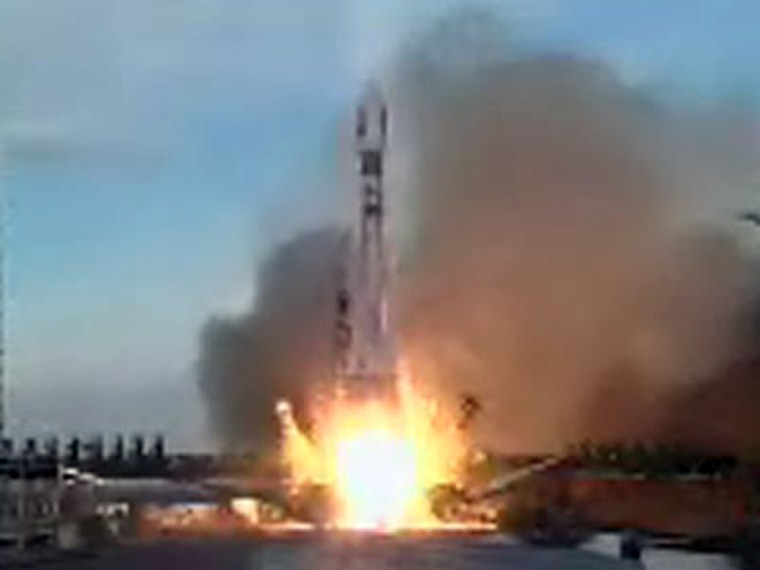A European-built spacecraft designed to explore the hot, dense atmosphere of Venus made contact with mission control Wednesday after blasting off on its five-month journey to Earth’s neighbor, scientists said.
The European Space Agency’s unmanned Venus Express probe, which lifted off from the Russian-leased Baikonur cosmodrome in Kazakhstan, should take 163 days to reach Venus.
Mission control activated the $260 million probe’s instruments after it left orbit and immediately picked up a signal to hearty applause in the mission’s observation room.
“The mission is an outstanding success,” Gaele Winters, director of ESA’s operations in Darmstadt, told reporters. “We had a perfect launch, the instruments are switched on, the solar panels are deployed, everything is working.”
Shortly after activation, ESA received its first congratulatory note, sent from the Pasadena, Calif.-based Planetary Society, which had monitored the launch from NASA’s Jet Propulsion Lab.
The mission was the latest evidence of growing competition in space just as NASA reassesses its strategy. Two Chinese astronauts spent five days in orbit last month on the country’s second manned mission.
NASA is cutting some of its programs to focus resources on developing a replacement for the space shuttle.
The space shuttle Columbia tragedy in 2003 caused NASA to ground its shuttle fleet for more than two years. Flights resumed in July with the Discovery, but the dangerous loss of a chunk of its insulation during launch has put future missions on hold until at least May, and possibly even next summer. NASA plans 18 more shuttle flights to the international space station and possibly one to the Hubble Space Telescope before the fleet is retired in September 2010.
Venus Express is Europe’s first mission to Earth’s closest neighbor in the solar system that is sometimes visible near the horizon at sunrise or sunset.
The launch originally was scheduled for Oct. 26 but was postponed after checks revealed a problem with the thermal insulation in the upper section of the Soyuz-Fregat rocket.
The mission aims to explore the planet’s atmosphere, concentrating on its greenhouse effect and the permanent hurricane force winds that encircle it at high altitudes.
The probe’s seven instruments, including a spectrometer to measure temperatures and analyze Venus’ atmosphere, will try to determine whether its many volcanoes are active and examine how a planet so similar to Earth could have evolved so differently.
“Venus is still a big mystery,” said Gerhard Schwehm, head of planetary missions at ESA.
In the next three days, mission controllers will continue testing the probe’s instruments and then allow it to continue toward Venus, which it is expected to reach in April. It will then be slowed down to enter orbit and begin the initial stages of gathering data in June.
“We hope to see the first results in early July,” said Schwehm, noting the probe will stay active for slightly more than a year. “We hope to know more then than we do now.”
Venus and Earth also share similar mass and density. Both have inner cores of rock and are believed to have been formed at roughly the same time.
Despite those similarities, the two have vastly different atmospheres, with Venus’ composed almost entirely of carbon dioxide and very little water vapor, resulting in the planet’s crushing density. It also has the hottest surface of all the planets.
The last mission to Venus was NASA’S Magellan, launched in 1989. It completed more than 15,000 orbits between 1990 and 1994. Using radar, Magellan was able to map virtually all the surface of Venus, revealing towering volcanoes, gigantic rifts and crisp-edged craters.
